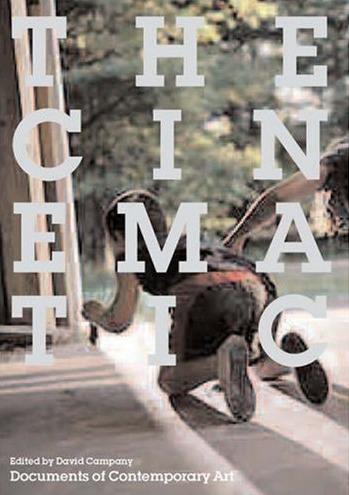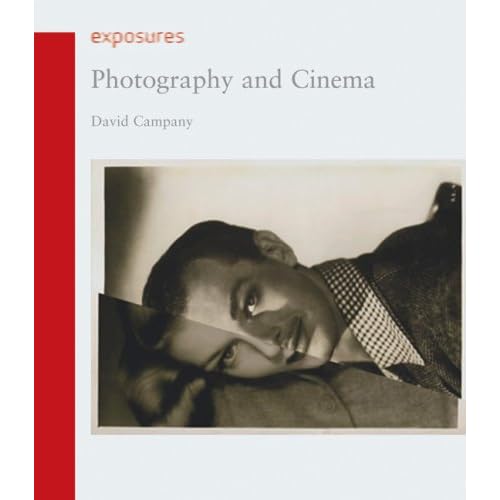David Campany (ed.): The Cinematic (2007)
Filed under book | Tags: · art history, cinema, contemporary art, film, film history, photography, video art

“The cinematic has been a springboard for the work of many influential artists, including Victor Burgin, Philip-Lorca diCorcia, Stan Douglas, Nan Goldin, Douglas Gordon, Cindy Sherman, and Jeff Wall, among others. Much recent cinema, meanwhile, is rich with references to contemporary photography. Video art has taken a photographic turn into pensive slowness; photography now has at its disposal the budgets and scale of cinema. This addition to Whitechapel’s Documents of Contemporary Art series surveys the rich history of creative interaction between the moving and the still photograph, tracing their ever-changing relationship since early modernism.
Still photography—cinema’s ghostly parent—was eclipsed by the medium of film, but also set free. The rise of cinema obliged photography to make a virtue of its own stillness. Film, on the other hand, envied the simplicity, the lightness, and the precision of photography. Russian Constructivist filmmakers considered avant-garde cinema as a sequence of graphic “shots”; their Bauhaus, Constructivist and Futurist photographer contemporaries assembled photographs into a form of cinema on the page. In response to the rise of popular cinema, Henri Cartier-Bresson exalted the “decisive moment” of the still photograph. In the 1950s, reportage photography began to explore the possibility of snatching filmic fragments. Since the 1960s, conceptual and postconceptual artists have explored the narrative enigmas of the found film still. The Cinematic assembles key writings by artists and theorists from the 1920s on—including László Moholy-Nagy, Pier Paolo Pasolini, Victor Burgin, Jeff Wall, and Catherine David—documenting the photography-film dialogue that has enriched both media.”
Contributors:
Roland Barthes, Jean Baudrillard, Raymond Bellour, Anton Giulio Bragaglia, Victor Burgin, Henri Cartier-Bresson, Catherine David, Thierry de Duve, Gilles Deleuze, Philip-Lorca diCorcia, Philippe Dubois, Régis Durand, Sergei Eisenstein, Mike Figgis, Hollis Frampton, Susanne Gaensheimer, Nan Goldin, Chris Marker, Christian Metz, Laura Mulvey, László Moholy-Nagy, Beaumont Newhall, Uriel Orlow, Pier Paolo Pasolini, Constance Penley, Richard Prince, Steve Reich, Carlo Rim, Raul Ruiz, Susan Sontag, Blake Stimson, Michael Tarantino, Agnès Varda, Jeff Wall, Andy Warhol, and Peter Wollen.
Publisher Whitechapel Art Gallery, London, 2007
Documents of Contemporary Art series
ISBN 0854881522, 9780854881529
221 pages
PDF (updated on 2022-11-29)
Comments (2)David Campany: Photography and Cinema (2008)
Filed under book | Tags: · cinema, film, film history, image, photography

What did the arrival of cinema do for photography? How did the moving image change our relation to the still image? Why have cinema and photography been so drawn to each other? Close-ups, freeze frames and the countless portrayals of photographers on screen are signs of cinema’s enduring attraction to the still image. Photo-stories, sequences and staged tableaux speak of the deep influence of cinema on photography.
Photography and Cinema a considers the importance of the still image for filmmakers such as the Lumière brothers, Alfred Hitchcock, Michelangelo Antonioni, Jean-Luc Godard, Chris Marker, Mark Lewis, Agnès Varda, Peter Weir, Christopher Nolan and many others. In parallel it looks at the cinematic in the work of photographers and artists that include Germaine Krull, William Klein, John Baldessari, Jeff Wall, Victor Burgin and Cindy Sherman.
From film stills and flipbooks to slide shows and digital imaging, hybrid visual forms have established an ambiguous realm between motion and stillness. David Campany assembles a missing history in which photography and cinema have been each other’s muse and inspiration for over a century.
Publisher Reaktion Books, 2008
Exposures (London)
ISBN 1861893515, 9781861893512
160 pages
PDF (updated on 2012-7-15)
Comment (0)Timothy Murray: Digital Baroque: New Media Art and Cinematic Folds (2008)
Filed under book | Tags: · cinema, electronic art, new media art, video art

“Digital Baroque analyzes the philosophical paradigms that inform contemporary screen arts. Examining a wide range of art forms, Murray reflects on the rhetorical, emotive, and social forces inherent in the screen arts’ dialogue with early modern concepts. Among the works discussed are digitally oriented films by Peter Greenaway, Jean-Luc Godard, and Chris Marker; video installations by Thierry Kuntzel, Keith Piper, and Renate Ferro; and interactive media works by Toni Dove, David Rokeby, and Jill Scott. Sophisticated readings reveal the electronic psychosocial webs and digital representations that link text, film, and computer.
Murray puts forth a Deleuzian psychophilosophical approach—one that argues that understanding new media art requires a fundamental conceptual shift from linear visual projection to nonlinear temporal folds intrinsic to the digital form.”
Publisher University of Minnesota Press, 2008
ISBN 0816634017, 9780816634019
320 pages
Key terms: Prospero’s Books, Bill Viola, King Lear, Gilles Deleuze, CD-ROM, Chris Marker, Jean-Luc Godard, Jean Laplanche, Louis Marin, Peter Greenaway, Leibniz, Keith Piper, Miroslaw Rogala, Psychoanalysis, Mary Ann Doane, Mona Hatoum, Kuntzel’s, electronic arts, Okinawa, scansion
PDF (updated on 2020-11-12)
Comment (0)
